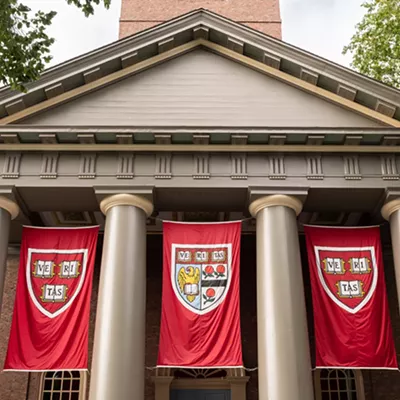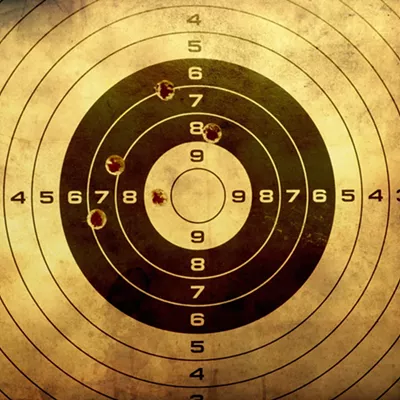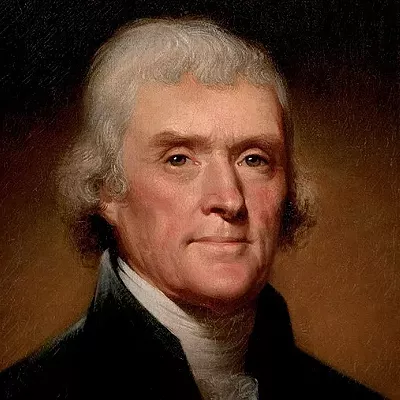That was OK with Ryan Olson, Dana Corral and Nick Lapalm, who figured the traditional place for a sit-in protest was on the floor anyway.
But their protest was hardly typical in these times of a distant and increasingly unpopular war: Olson, gay, and Corral, a lesbian, wanted in. Lapalm is "our straight ally," Olson says.
Because Olson and Corral are openly gay people, however, the military won't let them enlist: Because they're out, they stay out. Their protest against discrimination was part of a "Right To Serve" campaign in 33 cities across America on Tuesday to challenge the military's "don't ask/don't tell" policy on sexual orientation.
As the news cameras rolled and notes were scribbled onto pads, bemused furniture installers took in the scene. Sgt. Anthony Clark was making an animated phone call in the back office. Clark, who runs the U.S. Army recruiting station in the Lincoln Heights Shopping Center, soon emerged to politely and firmly usher various placard-carrying supporters and the media out to the sidewalk. He popped out a moment later to pull shut the door, which had been propped open by the furniture guys.
Clark wasn't taking any questions, but Olson, reached by cell phone as he waited for Spokane Police to come and arrest him on trespass charges, says "Sgt. Clark is a really, really nice guy. He tried to talk us out of doing this, saying an arrest would be on our permanent record."
Olson paid a visit to the recruiting center a week or so before the protest, he says, to scope the place out. "I have had a private conversation with Sgt. Clark but I am going to respect that and keep it private. In my mind he is a very friendly man, cordial and welcoming for all people who come into this place."
The 23-year-old Olson acknowledges the military shock-jock culture is likely to be caustically homophobic, but insists openly gay soldiers should not be refused.
"There are an estimated 63,000 gays and lesbians serving silently in the military today. They are willing to give their lives for their country," Olson says. In 13 years of "don't ask/don't tell," an estimated 11,000 soldiers have been discharged because of sexual orientation, he says.
The protest is meant to point out the hypocrisy of "don't ask/don't tell" and to call attention to a form of discrimination not tolerated in the rest of society, Olson says. Legislators are being pushed to sign the Military Readiness Enhancement Act that would abolish "don't ask/don't tell" and add the words "sexual orientation" to anti-discriminatory enlistment language that already includes race, creed and gender.
Olson admits to a case of nerves about a week ago when planning the protest. "But this morning," he says, "I woke up thinking of all the people I can help with this act" -- not only gays and lesbians serving in secrecy, but also soldiers who are facing short-turnaround deployments to combat zones or who have had tours of duty extended.
"The Army is stretched thin. There are so many people waiting for their loved ones to come home, but the military is stretched so thin they can't see them for a year -- and we want to serve, but we are denied," Olson says. "We are not against the military. We support the troops -- the gay and straight troops -- who are serving today. We respect all those persons and the jobs they do."
Old-School Sit-In
"I admire those kids for going in there," says Rusty Nelson of Spokane's Peace and Justice Action League. Nelson and four other PJALs members were arrested for trespass in March when they staged a sit-in at a Washington Army National Guard recruiting center to protest the use of guard units in overseas combat.
Both the PJALs protest and Tuesday's anti-discriminatory action "are something that needs to be done," Nelson says. A longtime veteran of the peace movement, and a Vietnam vet before that, Nelson says he's impressed by Olson and Corral. "Boy, back when I was active duty in '67-'68, there would have been just no consequences at all for anybody who did anything to a soldier who'd been identified as gay. It's horrifying to think what could have happened."
The trespass case involving Nelson and PJALs members Mark Hamlin, Jim Sheehan, Jay Sullivan and Nancy Nelson is still kicking through the courts. All the county's judges wound up recusing themselves because of past association with Sheehan, a former public defender, Nelson says. An out-of-town judge was brought in and is scheduled to issue a ruling Oct. 6 whether defendants can use the Nuremberg Principles in their defense.
Nelson notes that being anti-war has been pretty lonely the last three years. "It was easy to get a crowd ... until the actual invasion," he says.
Remembering Their Stories
It's not only protest that has faded. As the war is fought on the other side of the globe with a variety of media restrictions -- and with the burden of military service falling only on the few who volunteer -- other aspects have faded too.
The New York Times has tried to rectify some of that with a potent remembrance to the 65 women soldiers who have been killed in action in Iraq and Afghanistan. Despite heated national debate about women in combat, these deaths "have stirred no less - and no more - reaction at home than the nearly 2,900 male dead," Lizette Alvarez of the Times writes. "Most [Americans] don't know how many women have fallen, or under what circumstances."
Under Pentagon policy in effect since 1994, women are still theoretically barred from serving in ground combat forces and "co-located units" that support combat troops. In reality, however, Alvarez writes, the policy is stretching because the Pentagon doesn't have enough troops: Iraq doesn't have anything but a front line.
Aside from Alvarez' main article, the Times has also provided photographs and capsule accounts of the deaths of all 65 women. Of note locally is Idahoan Carrie French, who was 19 when she died last June from shrapnel. French was serving with the Idaho National Guard; several local soldiers told The Inlander that her death was the hardest to take during their deployment. "Just a year ago, she was a cheerleader at her high school," 1st Sgt. Michael Kish says.
Telling the Stories
This is also a war in which the military restricts access, the administration bans photographs honoring the dead (journalists are barred from photographing flag-draped coffins) and the risk of kidnapping and death keeps many journalists confined to Baghdad.
Slowly, that's changing. Pulitzer Prize winner Julie Sullivan and photographer Torsten Kjellstrand of The Oregonian have begun telling powerful stories of Oregon National Guard soldiers who've already served in Iraq and are now deployed to Afghanistan.
"I think we felt there was a lot of coverage of people wounded and killed ... that sort of journalism is a death watch," Sullivan says. "What we found so compelling was that these are citizen soldiers leading dual lives and the impact of service went far beyond. Just because somebody's deployment ended, their story didn't end. In fact, it may have been just the beginning of its effect on their lives and families."















